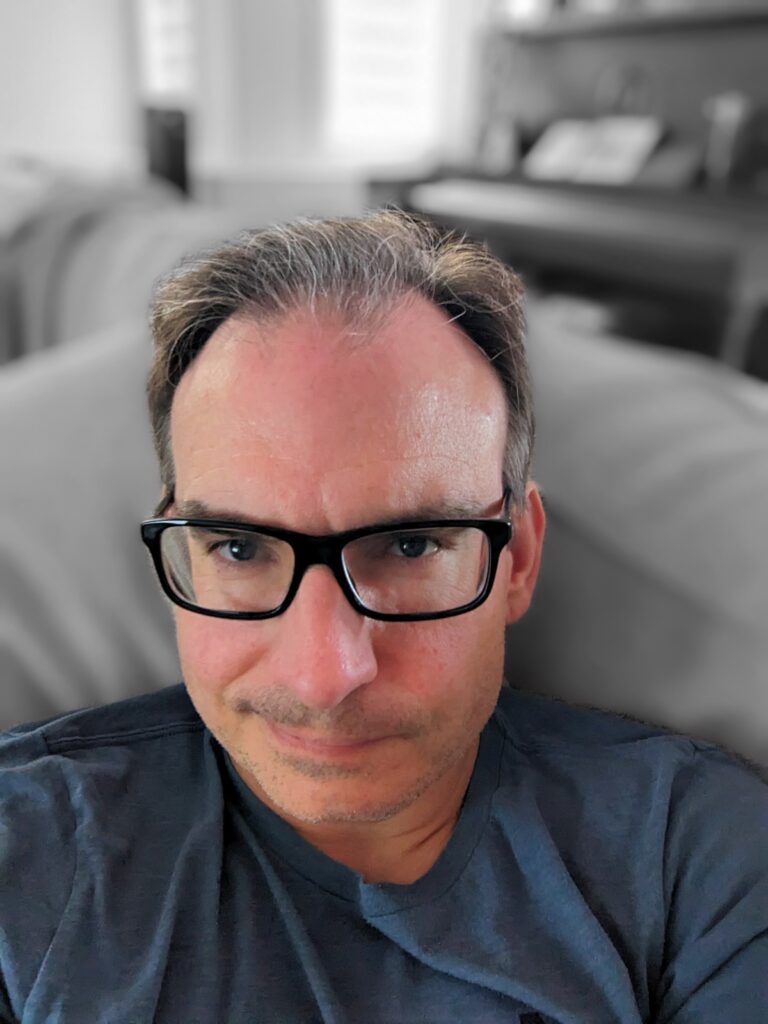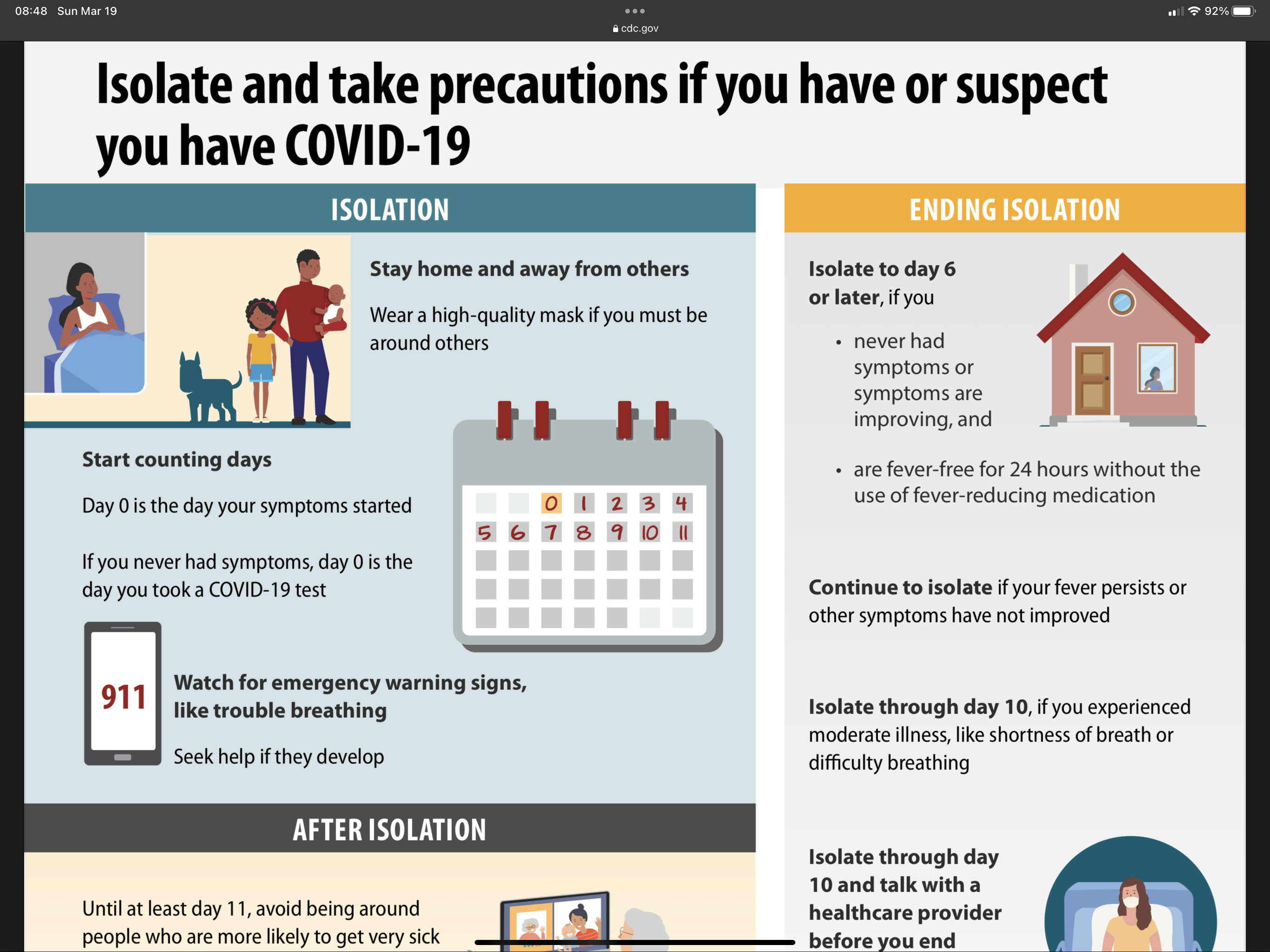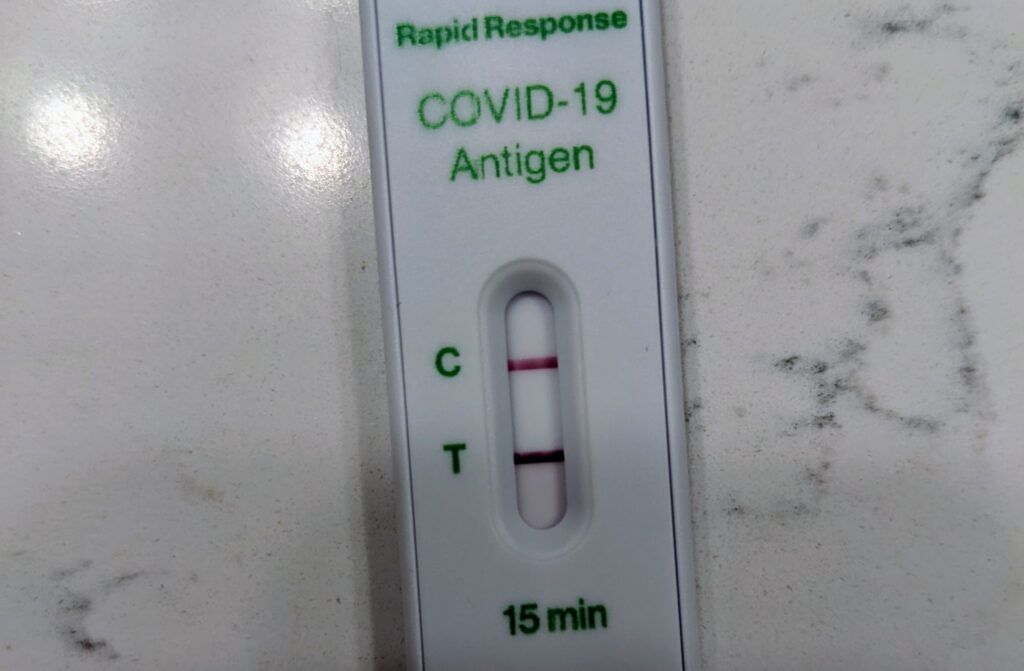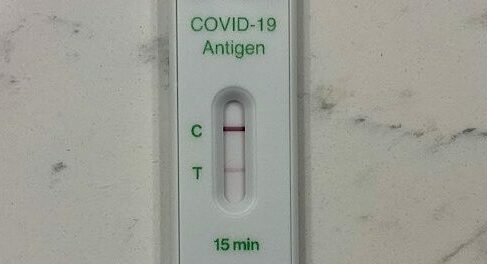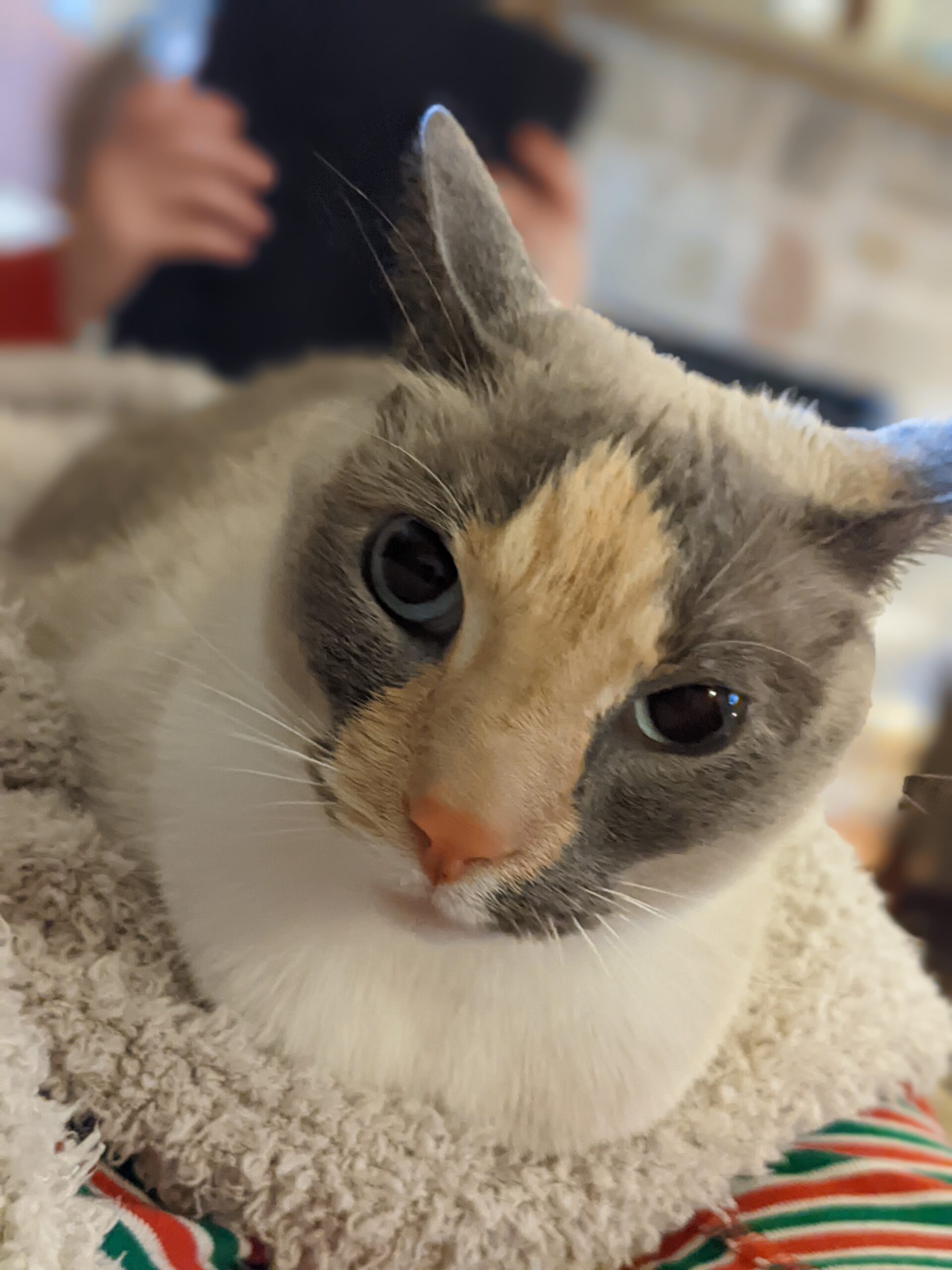The CDC recommends calling the first day you present symptoms as “Day Zero”.1For guidance on isolating and recommended terminology to help baseline the instructions, see https://www.cdc.gov/coronavirus/2019-ncov/your-health/isolation.html“Day One” is the first full day over which you experience symptoms from a SARS-CoV-2 infection. By that counting, I am on day 8, the 8th full day of symptoms.
What is impressive to me is the staying power of the symptoms. While the severity of my rapid antigen test response has waned (I am still testing positive as of yesterday, the morning of day 7), and while am certainly clearing my sinuses less often than a few days ago, the need to cough persists at about the same level and my sinuses remain … in need of clearing.

Day 3 test result 
Day 7 test result
Now, let’s frame this appropriately. For the most part, the only immune responses of any note that I have had since at least March 1, 2020 were inspired by the training from COVID and influenza vaccines. I’ve had 4 COVID vaccinations (1 original, 1 booster, a second booster, and then the bivalent formulation) and at least 2 flu vaccines. That’s a total of 4 mild immune responses (the most severe was aches and chills from the very first COVID vaccination which lasted 24 hours) and at least 2 unnoticeable responses (from the flu vaccines, from which I never have an observable response). Wild infections have been few during this period. I recall a 24-36 hour cold I picked up in either ‘21 or spring of ‘22. In the fall of ‘22 I caught some kind of mild infection that lasted only about the same amount of time.
In terms of major respiratory infections – an influenza or cold – I’ve really had nothing of note. Which also means I’ve had no serious challenges to my immune system in that time. Prior to 2020, I had one of those annually or biannually.
So there are two things mixed together in the present moment. First, this is my first wild exposure to COVID-19. It’s probably one of the Omicron variants, which tend to be milder in their symptoms. In addition, I have a recent vaccination which, 90% probably, additionally reduces the symptom severity. Second, this is my first serious respiratory infection in years. It’s bound to push me a little harder than it would have in the past, when I was under more regular assault by such agents (e.g. working at a university in a large city).
It’s hard to decouple these two things. Is it the COVID that drives the persistent symptoms? Is it the lack of recent wild infection training on the immune system? Is it both? Is it neither?
It’s interesting to be a living petri dish for this little monster. That said, I am grateful for all the hard work of the medical community that likely (a) prevented infection until this late date and (b) reduces the severity of the infection. I am also grateful to the march of evolution, guided by the principle of environmental stress, which has mutated the virus to a less deadly (albeit, more transmissible) form. These twin things – technological/social evolution and wild evolution – have made it possible to reflect on this infection from a couch in my home and not while dying in a bed in a COVID infection ward.
Another observation
It’s later on the same day I wrote this. Something which probably goes without saying regarding this bout has been this: I get tired. I don’t usually feel the need to nap in the afternoon, but this infection has come with an undeniable energy crash around mid-afternoon. I learned not to fight sleep many years ago. If you’re tired, it’s your brain trying to tell you something very important. So I’ve been napping. What’s interesting about this is just how consistent is the cycle of tired and aware, and the need to nap in the afternoon.
